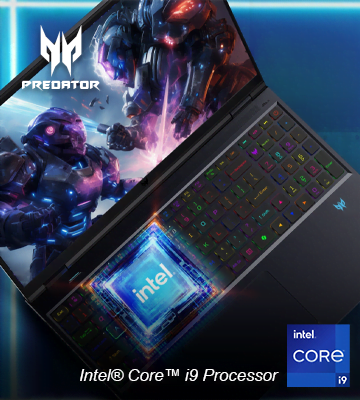A graphics card is a vital computer hardware component that determines how your desktop handles graphics and rendering (computer graphics) tasks. Whether you use your desktop or laptop for gaming, video editing, or simple browsing with a web browser, the choice between an integrated and dedicated graphics card affects performance and visual quality.
What Does an Integrated Graphics Card Mean and How Does It Work?
An integrated graphics card is part of the central processing unit (CPU) or the motherboard which are built into the cpu. It does not have its own dedicated video random-access memory (VRAM) but uses the portion of the system memory and memory controller to process images and videos. This setup lowers electric energy consumption and cost, making integrated graphics common in budget laptops and small form factor PCs.
Integrated GPUs work well for everyday tasks such as web browsing, watching videos, word processing, or running office software. Modern integrated graphics have improved significantly, now supporting light photo editing, casual gameplay, and even basic 3D graphics. However, because the GPU shares system resources with the CPU, performance can still drop during demanding tasks like 3D computer graphics or real-time computer graphics. Popular integrated graphics cards are Iris Xe graphics and Radeon graphics.
Pros and Cons of Integrated GPU:
Pros:
Low cost and widely available
Uses less power, extending battery life in laptops
Produces less heat, reducing cooling needs
Sufficient for basic tasks like streaming, browsing, and office work
Cons:
Slower in handling complex graphics and 3D rendering
Not ideal for modern games or video editing
Limited memory speed and size since it shares system RAM
May slow down overall system performance during heavy use
What Does a Dedicated Graphics Card Mean and How Does It Work?
A dedicated graphics card is a separate device with its own graphics processing unit (GPU) and dedicated memory (i.e. dedicated VRAM). It connects to the PCI Express bus or Peripheral Component Interconnect (PCI) slot on the motherboard. This separation allows the card to handle advanced tasks like ray tracing (graphics), Deep Learning Super Sampling (DLSS), and spatial anti-aliasing independently from the CPU.
Dedicated GPUs support higher frame rates in tasks such as gaming, better color grading, multiple video display controllers, rendering graphics and improve the overall performance. They excel in 3D modelling, animation, and editing using software like Blender (software), Autodesk Maya, Adobe Premiere Pro, or Final Cut Pro. Popular brands include AMD and Nvidia (GeForce series).
Pros and Cons of Dedicated GPU:
Pros:
High processing power for gaming and creative work
Own memory (VRAM) allows fast data handling
Supports multiple monitors and higher screen resolutions
Better frame rates and smoother graphics in demanding applications
Cons:
More expensive than integrated graphics
More power consumption and heat
Generates more heat, requiring cooling systems
Adds weight and size to laptops or desktops
Which One Will Be Better for You?
Your choice depends on your specific needs. While buying a laptop remember your needs first. For example: light tasks like browsing with a web browser, streaming video, or working with a word processor, integrated graphics provide an energy-efficient and affordable option.
If you use software for 3D modeling, professional video editing, or play modern games that rely on real-time computer graphics and global illumination, a dedicated graphics card is essential.
Integrated graphics are common in portable devices like ultrabooks, which prioritize power efficiency and heat control. Dedicated GPUs fit best in workstations, gaming PCs, or powerful laptops designed for heavy workloads.
Need a dedicated GPU? See all of our Graphics Card Collection. Choose the best GPU with the latest models, specifications, and brands like Nvidia, along with tips to choose the best graphics card for your system.
Conclusion
In summary, integrated graphics are best suited for general use and light tasks, while dedicated graphics deliver the performance necessary for resource-intensive applications. When selecting a graphics card, consider your primary use cases, budget, and whether you prioritize power efficiency or maximum performance.
Which is better: an integrated or a dedicated graphics card?
Dedicated graphics cards offer higher processing power and better visuals, ideal for gaming and professional software. Integrated graphics are sufficient for everyday computing tasks.
Do I need a dedicated graphics card?
A dedicated card is necessary only if you run graphics-heavy programs like video editors, 3D modelling software, or modern games. Otherwise, integrated graphics are enough.
Is Nvidia RTX integrated or dedicated?
Nvidia RTX is a dedicated graphics card series known for high-end gaming and creative work.
Is a dedicated GPU always better?
Dedicated GPUs provide superior performance but come with higher costs and power consumption. They are better if your tasks require extra graphics power.
Can I use a dedicated graphics card with an integrated graphics card?
Yes, you can use a dedicated graphics card alongside an integrated graphics card. Most computers automatically switch between the two based on the task. For example, the system may use the integrated GPU for basic tasks to save power and switch to the dedicated GPU for gaming, 3D modelling, or video editing. This setup is common in laptops and desktop computers that support both GPUs.
Do dedicated graphics cards have personalized graphics settings?
Yes, dedicated graphics cards offer personalized graphics settings through tools like the Nvidia Control Panel or AMD Radeon Software. These settings let you adjust performance, image quality, screen resolution, frame rate, ray tracing, anti-aliasing, and other visual features.




